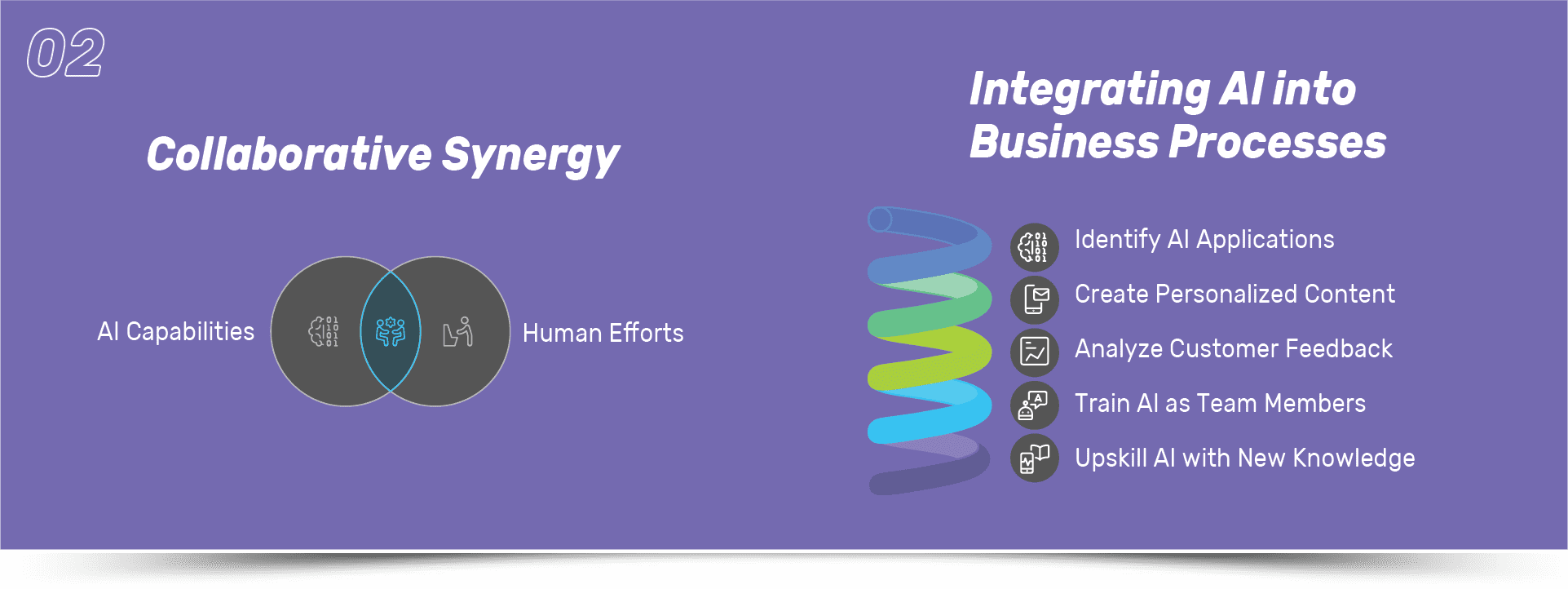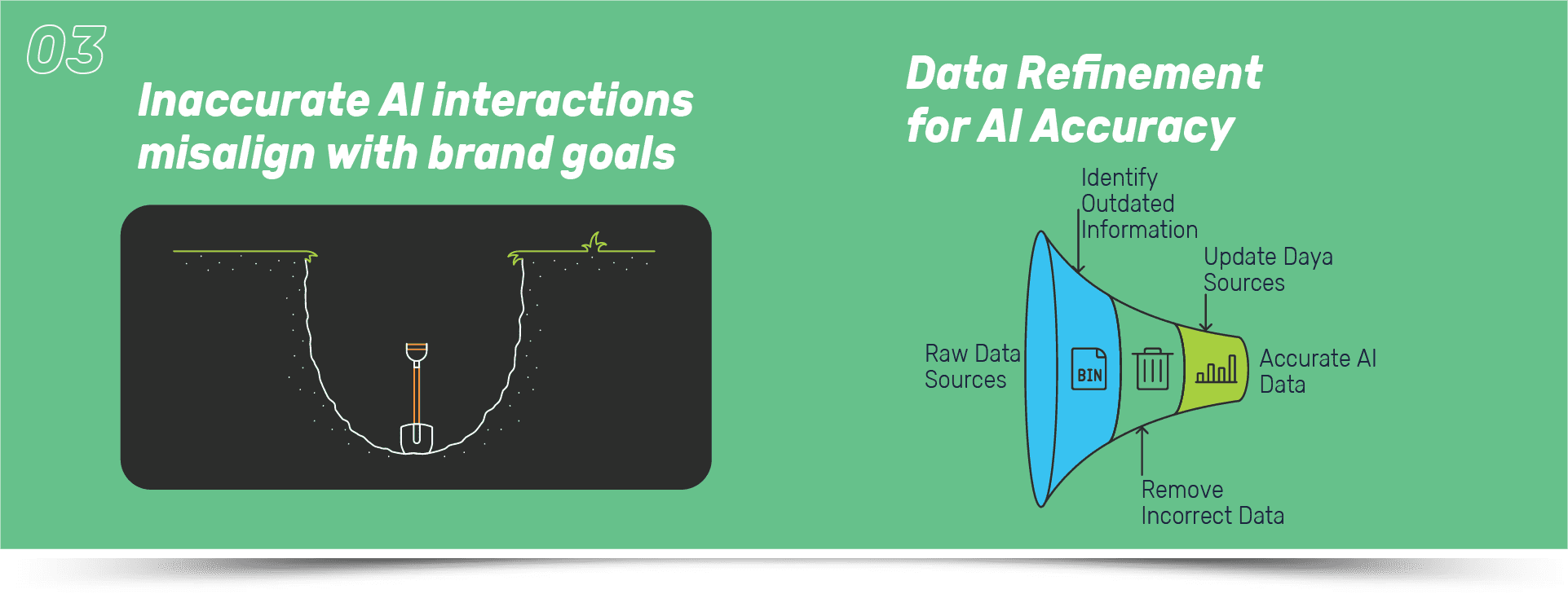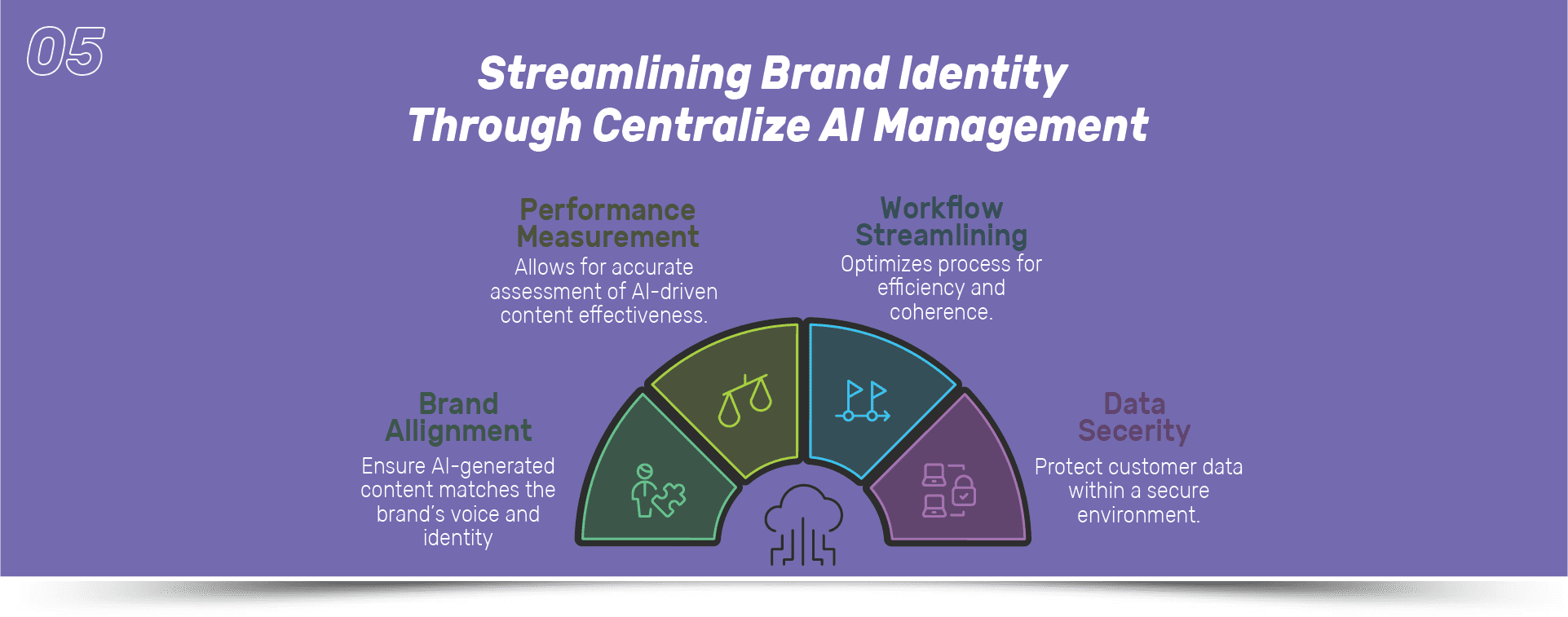
Implementing AI into your business strategy can be transformative, but there are some best practices to make sure you are set up for success.
Here’s a comprehensive checklist to make sure your business is ready to make the most of AI :
1. DEVELOP A STYLE GUIDE:
A clear, defined brand voice helps AI tools represent your business authentically and consistently across all points of engagement. Create a detailed style guide that outlines your brand’s tone, personality, goals, and core values. Specify how formal or casual your tone should be, and any “do’s and don’ts” for messaging.
- Identify key attributes of your brand personality (e.g., friendly, professional, humorous).
- List specific words and phrases that resonate with your brand identity.
- Create sample messages for reference across different platforms (e.g., email, social media, website).

2. THINK OF AI AS A PARTNER, NOT JUST A TOOL:
Treat AI as part of your team, and use it to enhance human creativity and efficiency. Identify areas where AI can supplement your team’s efforts, whether it’s by generating ideas, analyzing trends, or personalizing customer interactions. Identify high-impact areas where AI can collaborate with human efforts, such as:
- creating personalized email content or analyzing customer feedback.
- Train your AI as you would other team members. Remember to “upskill” your AI when you have new knowledge, processes or brand information they need to know.

3. REGULARLY AUDIT THE KNOWLEDGE YOU FEED YOUR AI PARTNER:
AI-driven interactions are only as accurate and relevant as the data they’re based on. Clean, concise and up-to-date knowledge enables AI to make informed decisions that reflect your brand and meet your goals.
- Regularly update and maintain your data sources, ensuring that outdated or incorrect information is removed.

4. EXPERIMENT AND LEARN
AI thrives on learning and adaptation, and experimentation allows you to discover what resonates with your audience.
- Start by testing AI in small, manageable areas, like generating social media posts or customer follow-up emails. Track performance metrics to see what engages customers best, and adjust based on feedback.
- Select one or two specific tasks to automate initially, like scheduling social posts.

5. CENTRALIZE AND TRACK AI OUTPUT:
Keep track of all AI-generated content, guidelines, and customer data (ideally all in one platform). This ensures that every piece of AI-driven content aligns with your brand’s voice and that performance can be measured accurately. A centralized place tomanage your brand identity, creative outputs, and workflows acts asyour central command center, streamlining content, and safely housing customer data.

Are you interested in a full AI-readiness audit of your business?

